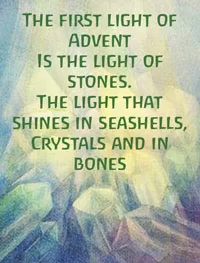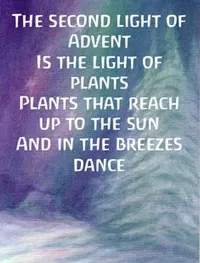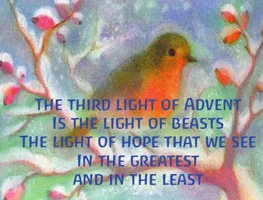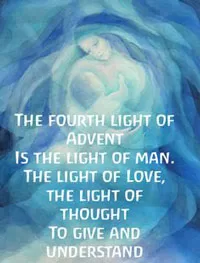There are many people today with an aversion towards Christian beliefs and fewer people than ever before identify as Christian yet the Christmas Festival is celebrated by most. Economics have come to rule this festival and it seems to have become an event that celebrates expenditure rather than something of the spiritual. The question for many of us then becomes how can we develop a relationship with the Christmas Festival that enables it to be spiritual yet not religious? How do we connect with the eternal wisdom that exists in a religious festival yet avoid the doctrine?
The Waldorf Curriculum explores the mythologies of many of the world’s major civilisations which also form the basis of many religions. The Indigenous Dreamtime myths, the Old Testament myths(the basis of Judaism), the Egyptian myths, the Indian (the basis of Buddhism and Hinduism) myths, the Persian myths, the Norse myths, the Greek myths and the Roman myths; are all studied and the children resonate with the wisdom that lives in all of these. Whilst the myths belong to each culture, the wisdom behind each of these belongs to humanity and by including this in a curriculum, the developing human being’s consciousness and soul is nourished and educated. Humanity has found many ways for understanding and communicating the unseen wisdom of the cosmos which human words cannot describe. Instead it is the archetypes and symbolism of cultural mythologies that do this.
In the Waldorf Curriculum the life of Christ is covered in Class 7 which presents a challenge for the Waldorf parent. Without a Christian background and a curriculum that does not cover Christianity until grade 7, how does one celebrate the Christmas festival in a meaningful way?
Throughout the year through the seasonal festivals, we celebrate the external events occurring in the natural world and we revere the unseen events occurring in the cosmos.
We aim to celebrate the great cosmic festivals with our heart, our senses and our minds as every festival of the year is founded in primaeval wisdom.
The Spring festival sees the celebration of the end of the long cold and the beginning of fertility whilst revering the unseen elemental beings bringing life to the natural world. The Autumn festival sees the celebration of the end of the harvest and the revering and preparation of the inner self for the long winter journey ahead.
Also the coming back into balance after the excitement and exhilaration that summer brings. The Winter Festival is a celebration of light in the dark, revering the inner light that we bear.

Before the birth of Christ, at the time of Christmas, man celebrated a festival of light (midwinter festival) which soon became known as the Christmas Festival. The “Christmas Festival” has indeed been celebrated for thousands of years before the birth of Christ. We experience the festival of the light in the way that we celebrate the winter festival in a Waldorf School. In the Northern Hemisphere the Christmas Festival carries the same impulse that our winter festival carries.
To deepen our understanding of this festival we need to deepen our understanding of what a “festival of light” truly means. In a lecture given by Steiner called “Christmas – The Birth of The Light” he traces a relationship between Persian teachings and Christian teachings. In ancient Persian an initiate of a high order was called a “sun runner”. They were named this as they were able to hold their inner spiritual light steady as the sun makes its rhythmic path across the sky. Light becomes the symbol of revelation:
The sun of his inner life, the sun of his spirit, had to shine for him with the same certainty as the outer sun, making it impossible for him to deviate from the path of the good and the wise.
With the Christian accounts of the birth of Christ we have a new image of this light being born into a personality and carried strongly amongst human beings. No longer is this light outside of man but within.
The external light, the light that is born out there in the universe, must today be born also in the human heart.
When you look at the Christmas traditions through these eyes, these become more meaningful as symbols of deeper truths. The light, the symbol of revelation, lives in the tinsel, Christmas lights, candles, stars and even Rudolf the Reindeer’s nose.
The story describing the birth of Christ gives the human being an image to strive towards on many levels. The symbol of a child that is born in a stable being revered by the three wise men gives us hope that no matter how flawed we are we have potential and are worthy of praise.
That someone who is born human and can carry such a strong light within, as Christ does in the Christian myths, gives us an image of realising our full potential – that we all can walk the earth exuding light.
In the tolling of the Christmas bells we hear not only the sounds of the church, but also the striving of the whole of mankind as it works and has worked toward its further development since the time when the earth with its spirituality arose from the great cold.
Looking broadly, the Christmas Festival deepens what the Winter Festival celebrates. The images that the birth of Christ add to this festival, which had been celebrated for thousands of years, are that the human heart holds a greater potential to carry the light of wisdom and love, born out of peace and harmony within.
When we carry these truths within ourselves and ask the question- how do I celebrate Christmas without doctrine but with spirit? – we arrive at the inspirations needed for our own family.
In Waldorf circles Advent (celebrated on the four Sundays leading up to Christmas) is something that is frequently celebrated by people of every religious background, every faith, every spiritual path as part of the festivals of the cycle of the year. Many Waldorf schools and families celebrate Advent by looking each week at the natural kingdoms on Earth: minerals the first week, plants the second week, animals the third week and humans the fourth week, all waiting for the birth of the light on Christmas Day.
This can be a lovely idea, and certainly one that has been fairly well-fleshed out within the Waldorf community with many resources available on the Internet.
The following verses accompany each week of Advent:
The first light of Advent is the light of stone–.
Stones that live in crystals, seashells, and bones.
The second light of Advent is the light of plants–
Plants that reach up to the sun and in the breezes dance.
The third light of Advent is the light of beasts–
All await the birth, from the greatest and in least.
The fourth light of Advent is the light of humankind–
The light of hope that we may learn to love and understand.”
If we hold in our hearts an intention for what the deeper spiritual meaning of the Christmas Festival is this will permeate and guide your choices for your family. There is certainly a cosmic force that surrounds this festival whether in the northern or southern hemisphere and we have the freedom to choose how we make use of these forces at this time.
We wish you all a safe, peaceful and restful holiday.
References:
Signs and Symbols of the Christmas Festival – The Birth of the Light. 1904 by Rudolf Steiner http://naturalfamily.50megs.com/custom2_1.html
Christmas Customs and Tradition- Why We Do What We Do, by Dr.R.Brasch










